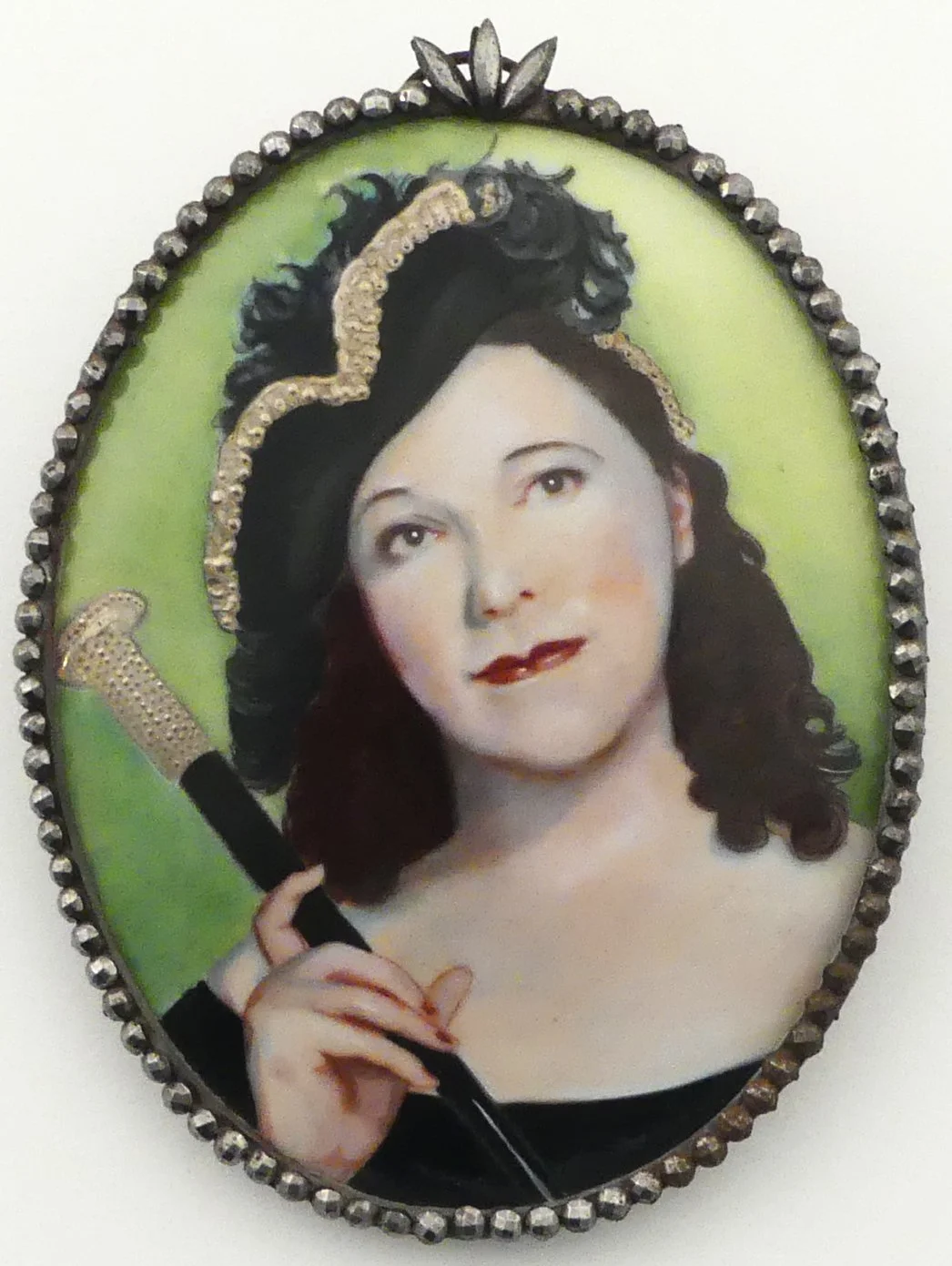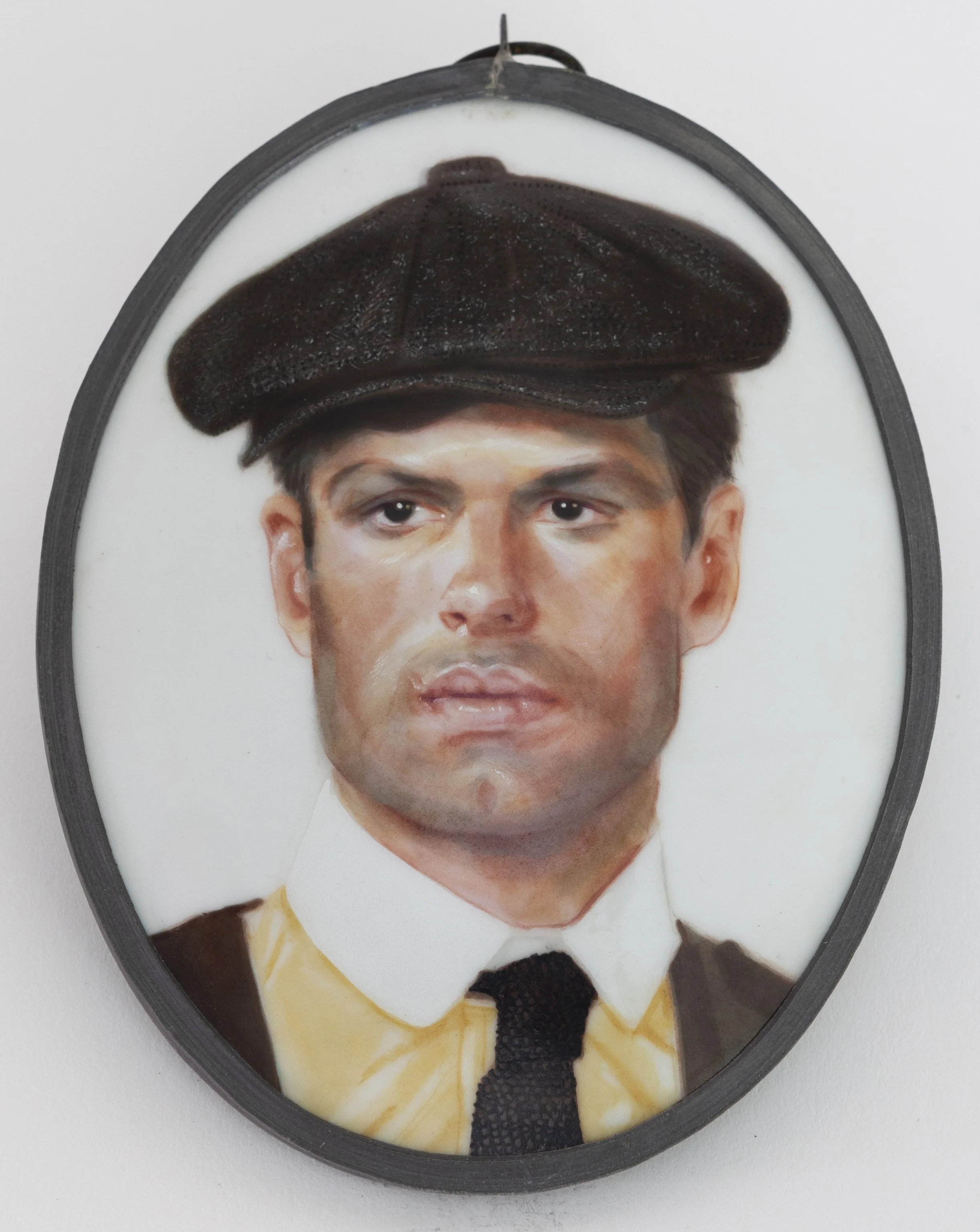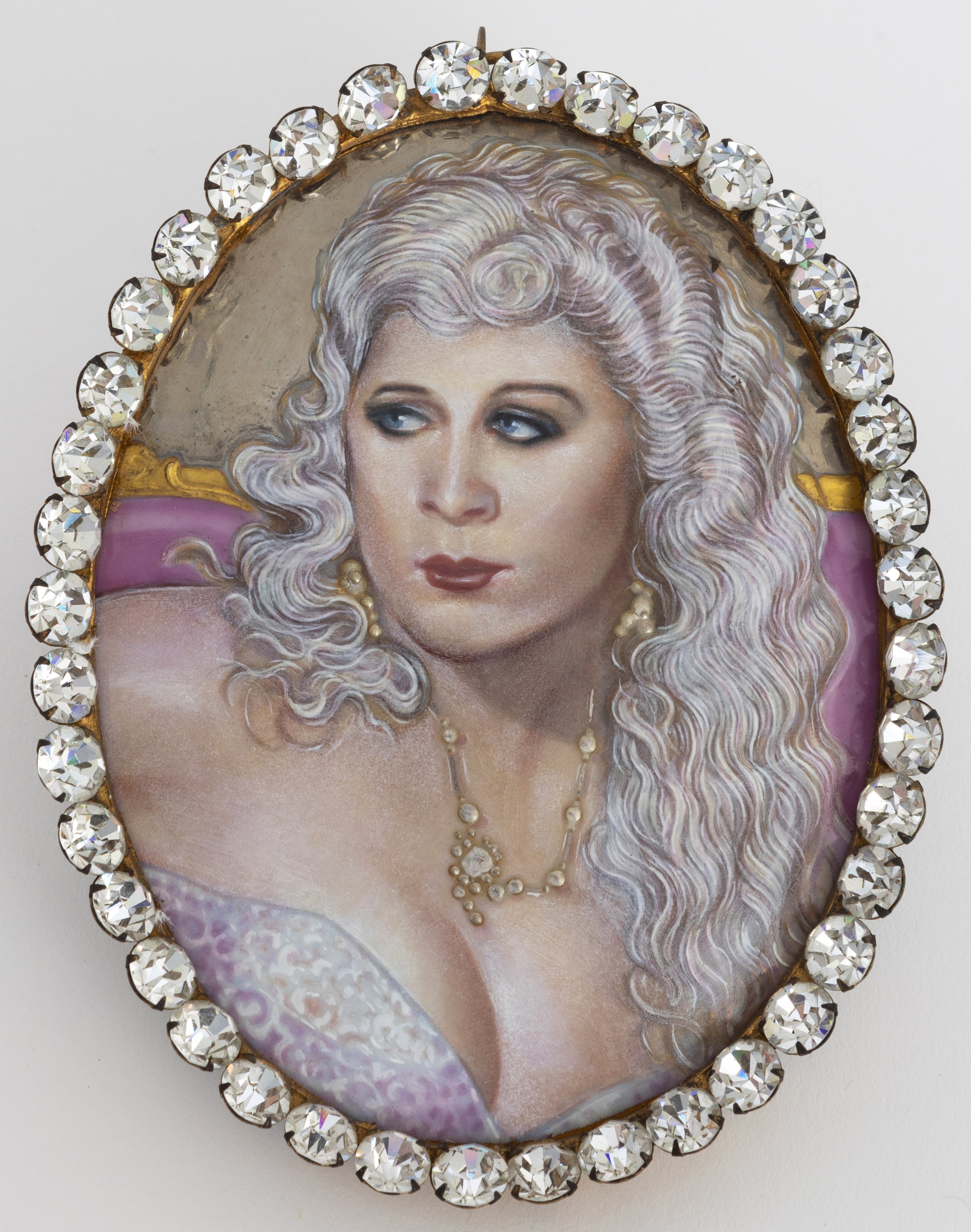friends, acquaintances, and idols
November 8 - December 20, 2025
Opening Reception | November 8, 6-8pm







exhibition text
Moskowitz Bayse is pleased to present Friends, Acquaintances, and Idols, a solo exhibition by the late Los Angeles-based artist Kenneth Kendall. Friends, Acquaintances, and Idols is the artist’s first exhibition with the gallery and is on view November 8 - December 20, 2025.
Delectably camp, Kendall’s practice presciently embraced both post-modernism’s penchant for vernacular pastiche and pop art’s analysis of fame before either concept entered the mainstream. Employing the tradition of enamel portrait miniatures—popularized in 1630s Europe—to depict his many friends, acquaintances, and idols such as Vivian Zarvis and Mae West, Kendall’s work was unapologetically exuberant. During the 1950s and 60s, when the Ferus Gallery’s hypermasculinity dominated the Los Angeles art world, Kendall operated as an insider-outsider—a covertly queer artist that preferred a dazzling milieu of Hollywood starlets.
Best known as the sculptor of James Dean’s bronze bust that still presides over the grounds of the Griffith Observatory, Kendall the individual is as much entrenched in the narrative history of Los Angeles as his work is. With his studio on Melrose from 1948 to 1959, Kendall’s workspace captivated the imagination of Hollywood passersby, drawing in film legends such as Marlon Brando and cementing the artist’s place as Tinsel Town’s resident portraitist. After a studio move to Flores Street at the top of the 1960s, Kendall blossomed into his new surroundings, embracing the burgeoning counterculture on the Sunset Strip and befriending the subjects of the porcelain miniature series shown in Friends, Acquaintances, and Idols.
In the creation of his signature portraits, Kendall used a combination of hand ground pigments, which were mixed and then painted on porcelain plaques. He fired these tablets in a small kiln at temperatures exceeding 1200° F. As the details were added, each work received multiple firings with some taking over fifty hours to complete. On view as part of this exhibition is one of the artist’s archival notebooks. Inside is an original wax drawing and specific glazing instructions for the work Vivian Zarvis, “Mrs. Christopher Jagger” (1974). Kendall’s craftsmanship is comparable to the early masters of the medium such as Jean Petitot or Henri Toutin, though his style is undeniably contemporary.
With the fixation on celebrity insinuating an interest in the distinction between public image and interior self, a viewer of this body of work cannot avoid considerations of Kendall’s own interiority. In the early 1950s, when Kendall began achieving success as an artist in Hollywood, homosexuality was unequivocally taboo, if not illegal. Through his portraits, Kendall found a way to proudly express his desires, lingering on depictions of the male body in both his early and late work with distinctly queer-coded portraits such as Miles O’Keefe as Tarzan (1981). Displaying these works alongside those of his friends and idols, Kendall playfully conveys his own passions and sexuality at a time when to do so was an act of rebellion.
Text by Christie Hayden
Kenneth Kendall (b. 1921, Los Angeles, CA; d. 2006, Los Angeles, CA) was a self-taught portrait painter and sculptor in West Hollywood, CA. His father was a theatrical agent and vaudevillian. His aunt was the silent film actress Patty DuPont. He graduated from Los Angeles High School in 1940 and served two years in the US Navy. Kendall worked as an extra in many films including Citizen Kane (1941), The Story of G.I. Joe (1945), Julius Caesar (1953), and Knights of the Round Table (1953). Kendall exhibited at the Royal Society of Miniature Painters, Sculptors, and Gravers in London and was included in Daphne Foskett’s book Collecting Miniatures (1979).

















